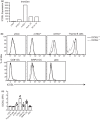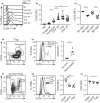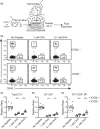The ICOS-ICOSL pathway tunes thymic selection
- PMID: 34962663
- PMCID: PMC9304562
- DOI: 10.1111/imcb.12520
The ICOS-ICOSL pathway tunes thymic selection
Abstract
Negative selection of developing T cells plays a significant role in T-cell tolerance to self-antigen. This process relies on thymic antigen-presenting cells which express both self-antigens and cosignaling molecules. Inducible T-cell costimulator (ICOS) belongs to the CD28 family of cosignaling molecules and binds to ICOS ligand (ICOSL). The ICOS signaling pathway plays important roles in shaping the immune response to infections, but its role in central tolerance is less well understood. Here we show that ICOSL is expressed by subsets of thymic dendritic cells and medullary thymic epithelial cells as well as thymic B cells. ICOS expression is upregulated as T cells mature in the thymus and correlates with T-cell receptor signal strength during thymic selection. We also provide evidence of a role for ICOS signaling in mediating negative selection. Our findings suggest that ICOS may fine-tune T-cell receptor signals during thymic selection contributing to the generation of a tolerant T-cell population.
Keywords: ICOS; ICOSL; negative selection; thymic antigen-presenting cells; thymocytes.
© 2021 The Authors. Immunology & Cell Biology published by John Wiley & Sons Australia, Ltd on behalf of Australian and New Zealand Society for Immunology, Inc.
Conflict of interest statement
All authors declare not conflicts of interest.
Figures




References
-
- Klein L, Robey EA, Hsieh CS. Central CD4+ T cell tolerance: deletion versus regulatory T cell differentiation. Nat Rev Immunol 2019; 19: 7–18. - PubMed
Publication types
MeSH terms
Substances
Grants and funding
LinkOut - more resources
Full Text Sources
Research Materials
Miscellaneous

